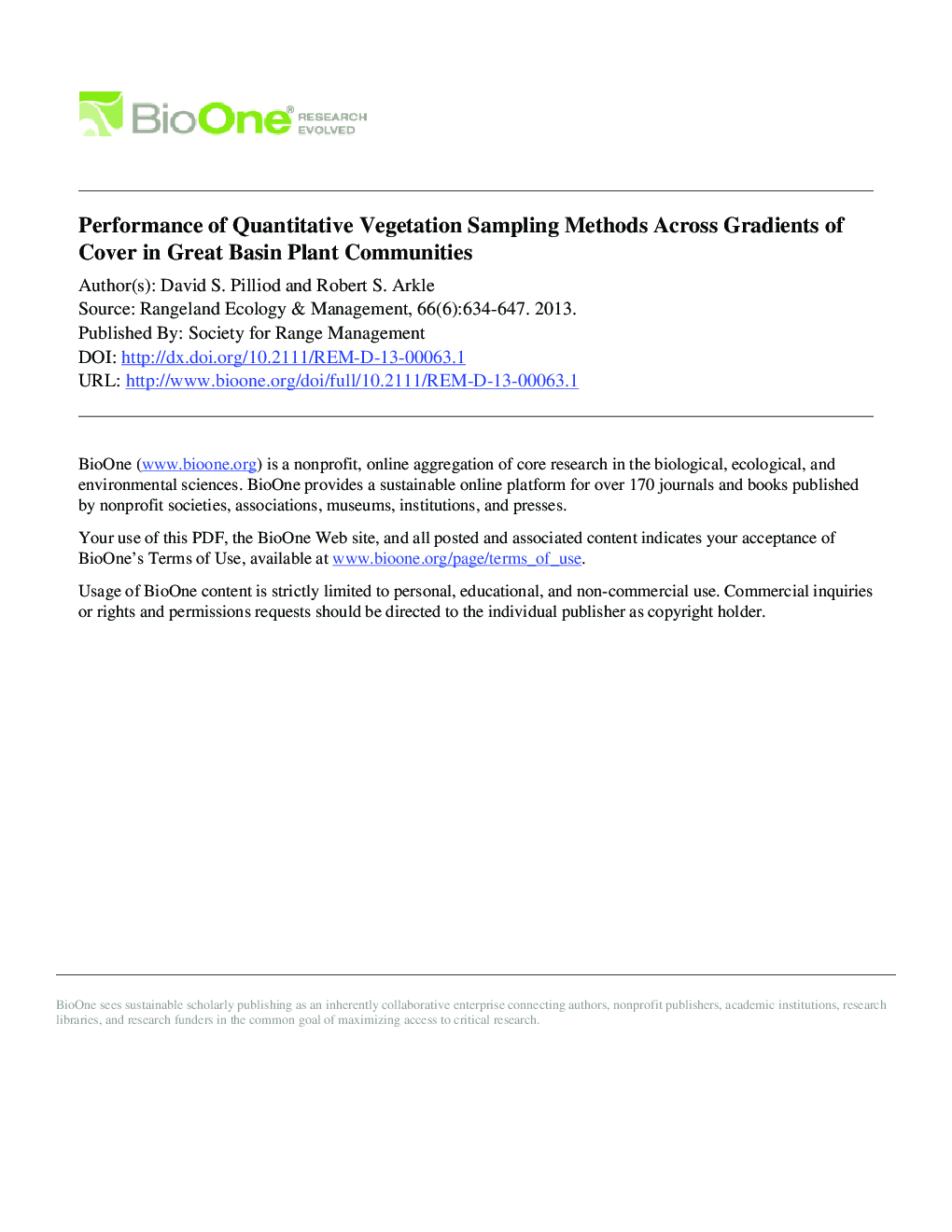| کد مقاله | کد نشریه | سال انتشار | مقاله انگلیسی | نسخه تمام متن |
|---|---|---|---|---|
| 4404470 | 1307165 | 2013 | 15 صفحه PDF | دانلود رایگان |
عنوان انگلیسی مقاله ISI
Performance of Quantitative Vegetation Sampling Methods Across Gradients of Cover in Great Basin Plant Communities
دانلود مقاله + سفارش ترجمه
دانلود مقاله ISI انگلیسی
رایگان برای ایرانیان
کلمات کلیدی
موضوعات مرتبط
علوم زیستی و بیوفناوری
علوم کشاورزی و بیولوژیک
علوم کشاورزی و بیولوژیک (عمومی)
پیش نمایش صفحه اول مقاله

چکیده انگلیسی
Resource managers and scientists need efficient, reliable methods for quantifying vegetation to conduct basic research, evaluate land management actions, and monitor trends in habitat conditions. We examined three methods for quantifying vegetation in 1-ha plots among different plant communities in the northern Great Basin: photography-based grid-point intercept (GPI), line-point intercept (LPI), and point-quarter (PQ). We also evaluated each method for within-plot subsampling adequacy and effort requirements relative to information gain. We found that, for most functional groups, percent cover measurements collected with the use of LPI, GPI, and PQ methods were strongly correlated. These correlations were even stronger when we used data from the upper canopy only (i.e., top “hit” of pin flags) in LPI to estimate cover. PQ was best at quantifying cover of sparse plants such as shrubs in early successional habitats. As cover of a given functional group decreased within plots, the variance of the cover estimate increased substantially, which required more subsamples per plot (i.e., transect lines, quadrats) to achieve reliable precision. For GPI, we found that that six-nine quadrats per hectare were sufficient to characterize the vegetation in most of the plant communities sampled. All three methods reasonably characterized the vegetation in our plots, and each has advantages depending on characteristics of the vegetation, such as cover or heterogeneity, study goals, precision of measurements required, and efficiency needed.
ناشر
Database: Elsevier - ScienceDirect (ساینس دایرکت)
Journal: Rangeland Ecology & Management - Volume 66, Issue 6, November 2013, Pages 634-647
Journal: Rangeland Ecology & Management - Volume 66, Issue 6, November 2013, Pages 634-647
نویسندگان
David S. Pilliod, Robert S. Arkle,